I spent the whole summer of 2003 exploring India. After the first few weeks of hot and dusty excursions through the plains — checking out temples and riding overnight trains — I went up to the cool summer hill station of Almora to relax and unwind for a week.
In a local chai shop, I came across a yellowed old guidebook with a short description of Roopkund – a mysterious, high-altitude lake that was nestled in the crux of Trishul (23,359 ft.). The small lake was filled with several hundred human skeletons frozen in the ice for most of the year. Scientists who analyzed the skeletons believe that they were religious pilgrims in the 12th to 15th century, who got caught in a ferocious hailstorm and perished.
Wow!
Roopkund lake was less than 100 miles from where I was. I quickly forgot all about relaxing and unwinding. I knew I had to go to Roopkund and see it for myself!
I asked the staff at the town’s only trekking shop in town about Roopkund. They didn’t know much about it firsthand, but they said the area was remote and dangerous to visit alone so I searched for a partner.
I met a fiery young backpacker from Israel named Roy who was at the end of his adventure in India. He had just cashed his last traveler’s check. I told him about my plan to visit Roopkund and he wanted to go, but he lacked money and gear. I offered to pay for his food and transport cost and said he could sleep in my tent so he could save on having to pay for accommodations. That sealed the deal. We were on our way the next morning. We took a string of buses from Almora to the town of Gwaldam, asked for directions and we began our trek toward Roopkund.
Beginning the Trek
The first night we pitched camp in a meadow next to some Tibetan horse herders, who smiled and made friendly gestures but only spoke Tibetan. We hiked and hiked up a wide dirt path through a lush green valley to the village of Wan, where we were greeted by a group of Indian construction laborers who invited us to join their lunch of curry, rice, and lentils. We continued past Wan through numerous, picturesque little Himalayan settlements, groups of a few houses here and there, inhabited by traditional Hindu mountain people who farmed the land, raised animals, and lived as they had for thousands of years — without TV, cars or electricity.
The second night we set up camp on a tiny green island between two shallow streams. When we got settled into our tent, we were greeted by a “Hello sir!” from a business-like 7-year-old boy who sold us some cordial concentrate for 100 rupees, which he had pressed from summer wildflowers. It was red, sweet, and had a delicious floral taste.
Caught in A Hailstorm
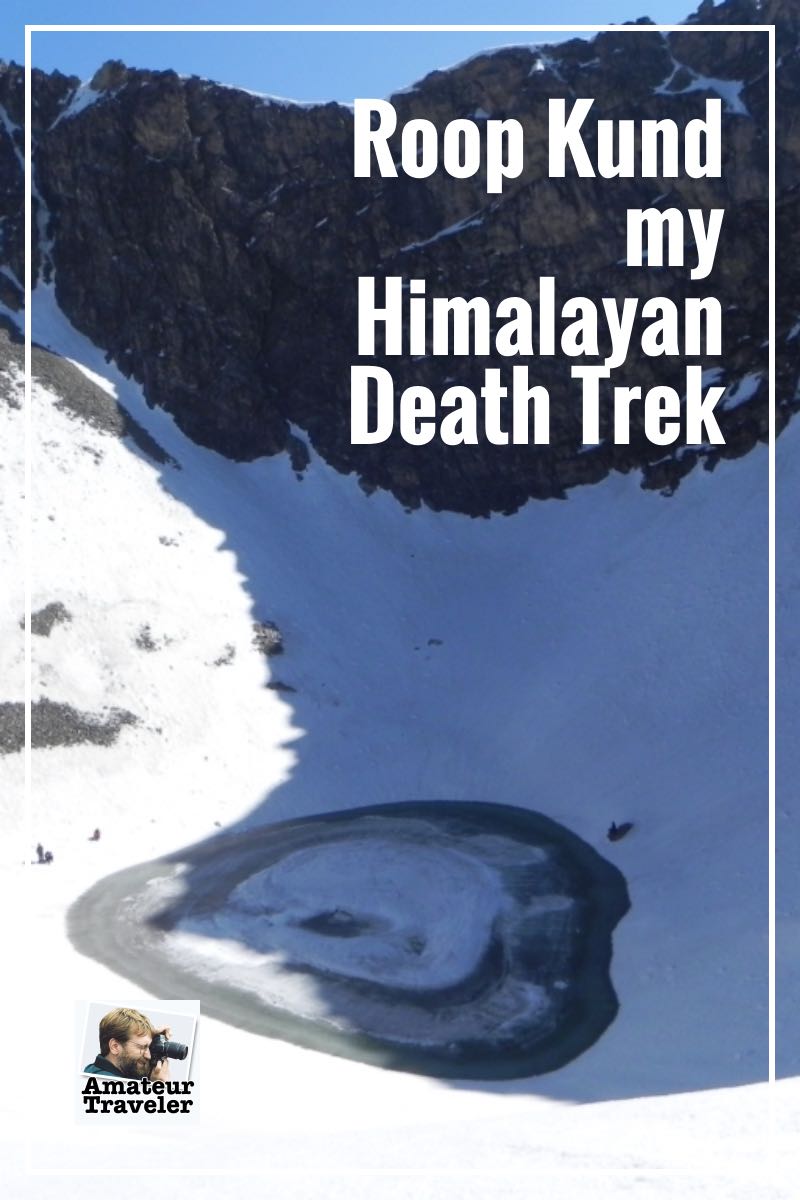
The droplets turned to small painful blasts of hail and we kept running until we could see the huge rolling green pastures of Bedni Bugyal a few hundred yards in the distance. Starting to get soaked, we sprinted like hell for the nearest patch of high green ground and we rushed to pitch my tent. We fumbled and rushed and got the poles wrong, and then fixed it, clipped on in the fly.. ripped off our wet outer clothes and dived into the tent – shaking and chattering with cold and adrenaline – fumbling to get into our sleeping bags. It took us a good 30 minutes to fully calm down and catch our breath.
The next day we arose to the sight of a beautiful rolling meadow, surrounded on 3 sides by 20,000+ foot white Himalayan peaks. While we relaxed that day, we went over our plan to climb up into the snow and visit Roopkund. We were stoked up with excitement, joking and bragging about what an amazing adventure we were on and the amazing stories of frozen skeletons we would be able to tell our friends after we got back home. We felt like we were on top of the world, or at least close to it. We were gonna “conquer” the mysterious death lake, Roopkund.
Making the Ascent
We set our watch alarm for 4:30 AM, and by headlamp, we walked high above the meadows and onto narrow tracks leading towards the snowline. I lost my footing and slipped ten feet down a steep gravel bank, uncomfortably close to a drop-off of several hundred feet. As I pulled myself back up and caught my breath, I soberly realized that we were 3 days walk from the nearest road and that we were really on our own.
Tracking the Snow Leopard
We made it to a huge white snow bowl at the base of the upper Trishul peak, a place at 16,000 feet called Bagubassa. Roy called out, “Hey! someone has already been here this morning!” He pointed to a set of footprints in the snow leading at least a mile up a steep snowy ridge towards Roopkund. We walked to the edge of the snow and we were surprised not to see human footprints but rather, saw fat, cat’s paw-shaped tracks – the size of coconut shells. “Is it a tiger?” he asked. “No, it’s a snow leopard!” I said. There was no mistaking it: fresh snow leopard tracks. Leading in the direction of Roopkund. The feeling of excitement and intoxication being in a wild, remote place was intense.
We followed the snow leopard’s tracks and I was amazed how it could trot through such a cold, steep and inhospitable environment. I was struggling to keep my balance. The snow leopard lives in the highest of places where the gods live: places where humans didn’t really belong.
I began to realize that it was kind of foolish and arrogant to even be trying to “go there.”
Roopkund Trek Difficulty Level
We followed the tracks for a mile, and the snow got progressively deeper and thicker — up to our thighs. It took a massive effort to walk even a few meters. By 1 p.m. – we were still following the tracks and we were almost 8 miles from our camp. The ridge where Roopkund sat looked too high and plowed with waist-deep snow to get to during August (we later found out the snow melts in September). And we knew that we had to turn back. We weren’t going to make Roopkund this year.
Stuck in Snow Banks
As we started to go back, it started to get fiercely windy up there — making it difficult to keep our balance on the steep snow slopes. Loose snow started to blow hard and it made it difficult to see more than several meters ahead. My partner Roy didn’t have sunglasses, and loose snow was blowing into his eyes. The bright glare was blinding him. I told him to follow right behind me – and even hold onto my jacket if he needed to. We veered off our original foot tracks and ended up digging ourselves out of several waist-deep snowbanks that exhausted us like quicksand. We got into arguments about which was the correct way back to our meadow camp. I had never felt so cold or uncomfortable in my entire life. I realized that this mountain could kill me, dead, within minutes.
My ego was severely flattened. My sense of masculine conquest was dashed. I felt ashamed of my “teenage” obsession to see frozen skeletons. I realized that those skeletons in Roopkund were poor souls – people exactly like me and Roy – who happened to be in this same place at the wrong moment when the weather was worse. I realized that the mountains I loved to explore so much were beautiful but deadly and unforgiving places – and that each time I went into them, I was taking a big risk. I realized that animals, like the snow leopard, were greater and far braver than foolish, gawking tourists like me. And I realized that if the wind got worse or more severe – and we got stuck or lost – our lives would be over, reduced to a small blurb about 2 missing backpackers in the Indian newspaper. The end.
After two hours of backtracking, we made it to the edge of the snow bowl, and we had to slide down a steep muddy bank to get to the trail back to our campsite. It soiled our clothes. We got back to camp in crawled into our sleeping bags, exhausted and unable to say much. We didn’t make it to Roopkund and didn’t get to take pictures of any old skeletons (the pictures above are from a friend who went in September) – but we got a small taste of the experience of what must have happened to them.
What This Adventure Taught Me
After the Roopkund trek, the whole tone of the rest of my trip through India was changed. I felt a lot more humble and respectful of nature. I felt a shift in emphasis from trying to “conquer” destinations for the sake of cool pictures and stories to brag about, to gracefully entering places and experiencing things with more of a feeling of reverence.
I’ll always thank the snow leopard and the Great Himalayas for teaching me this important life lesson.
3 Responses to “Roopkund Trek: My Himalayan Death Trek – India”
Leave a Reply
Tags: adventure travel, article, india, trekking

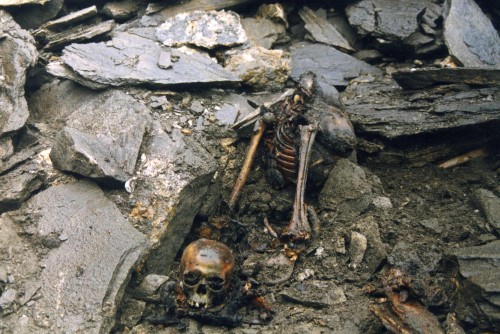
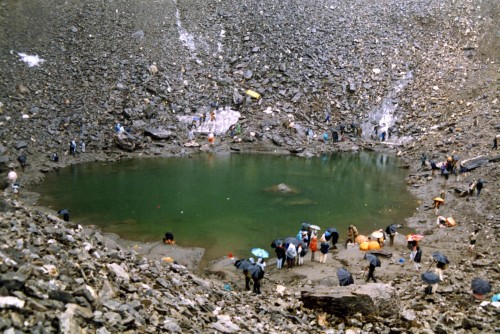
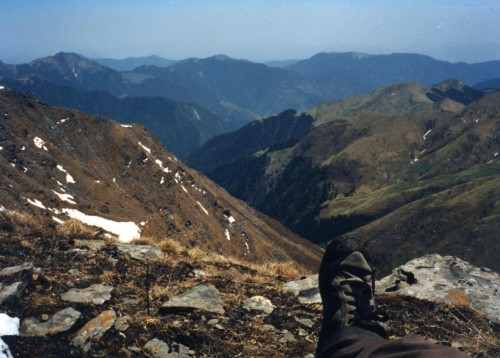

 Best Treks in India – North East India
Best Treks in India – North East India Varanasi, India – Ceremony, Tourism and Death on the Ganges (Video #103)
Varanasi, India – Ceremony, Tourism and Death on the Ganges (Video #103)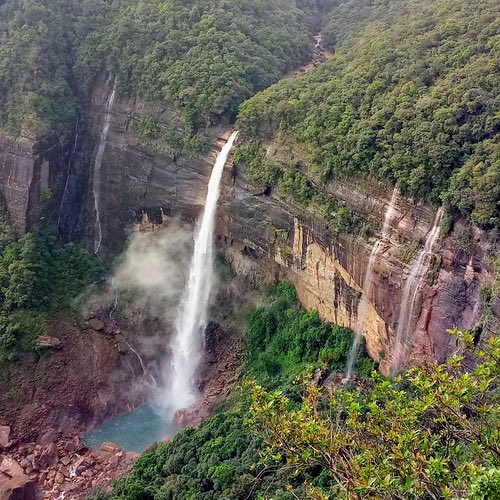 Places to Visit in Meghalaya, India
Places to Visit in Meghalaya, India India and the Enduro India Motorcycle Rally – Episode 34
India and the Enduro India Motorcycle Rally – Episode 34


Suzy
Says:September 5th, 2010 at 8:30 am
What an adventure! It’s unfortunate you didn’t make it to Roop Kund, but definitely a great lesson that you have to be respectful of the power of nature.
SURYA SHARMA
Says:April 24th, 2011 at 2:18 pm
Hi RAVI,
such a wonderful hobby u do have,really traveling to new,unknown places,meeting with people of different ethics and culture enrich our life.And your experience was worth reading.Thanks.I would like to add more about Himalayas…Great Himalaya serves as starting point for several rivers in the country. River Rafting is one of the most popular adventure sports in India.Rishikesh,a marvelous hill-side city, situated on the foothill of Himalaya Mountains of the North India. The ancient city of pilgrimage, by millions of people of India and those from abroad, to worship the temples considered divine by the Hindus has transformed into a city of Tourist attraction in recent years. Main reason being, its abundance of scope for spending your vacation, amidst a mountain-forest-river environment for adventure sports.For more information,kindly look at http://www.roofnride.com
Kritika
Says:December 28th, 2011 at 1:11 am
Hey!
I really admire your passion and would love to go trekking in India someday. Himalayas is a great challenge. I also have a list of places I read on TravelWire Asia that are worth visiting. http://www.travelwireasia.com/785/7-great-glamping-destinations-in-asia/ It is the 6 best scenic mountain vistas in India that are great for walking!
Also I am not sure if I’ll end up going to Myanmar, but this is a link to the best treks in Myanmar. Thought you might find it interesting